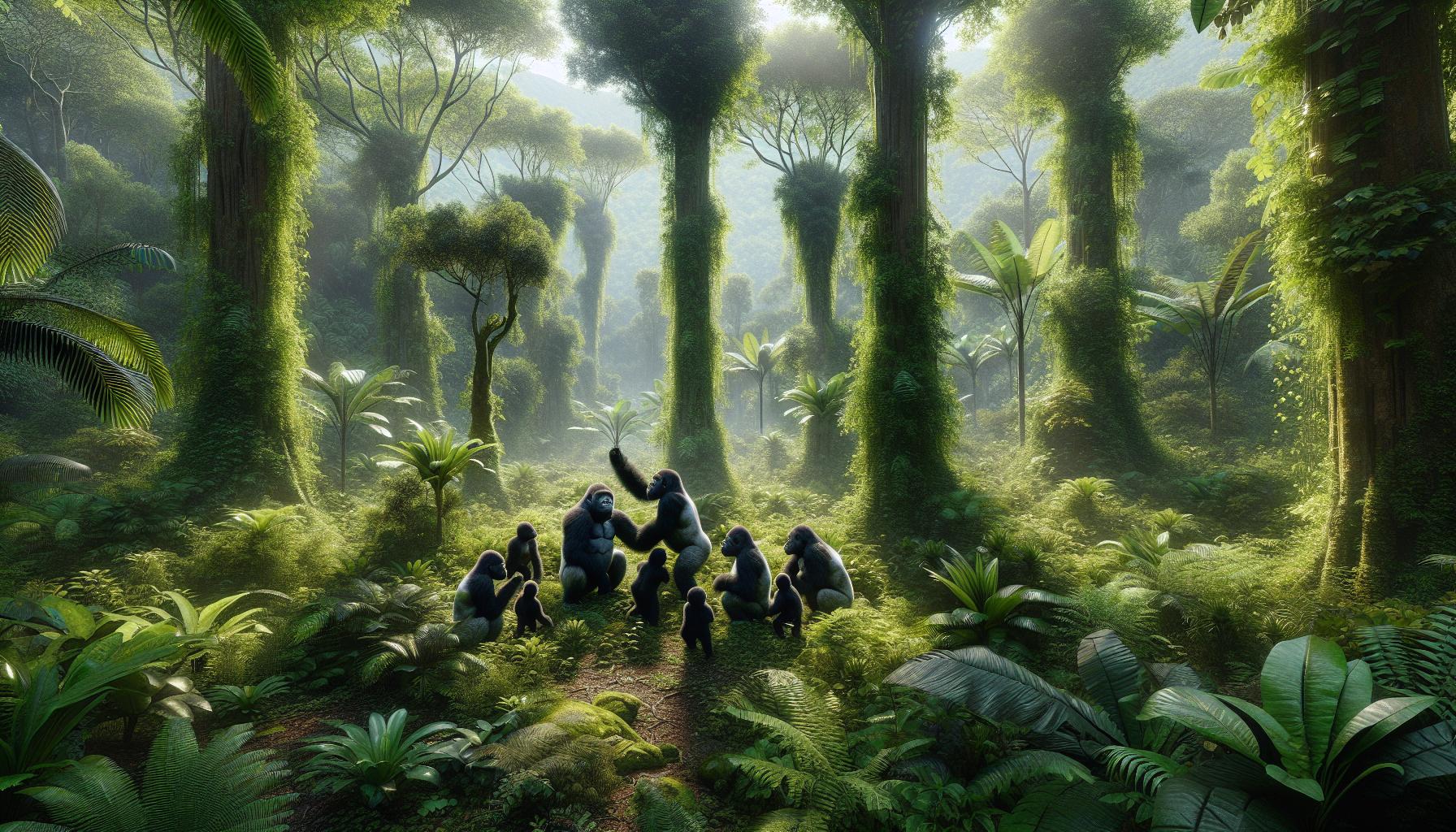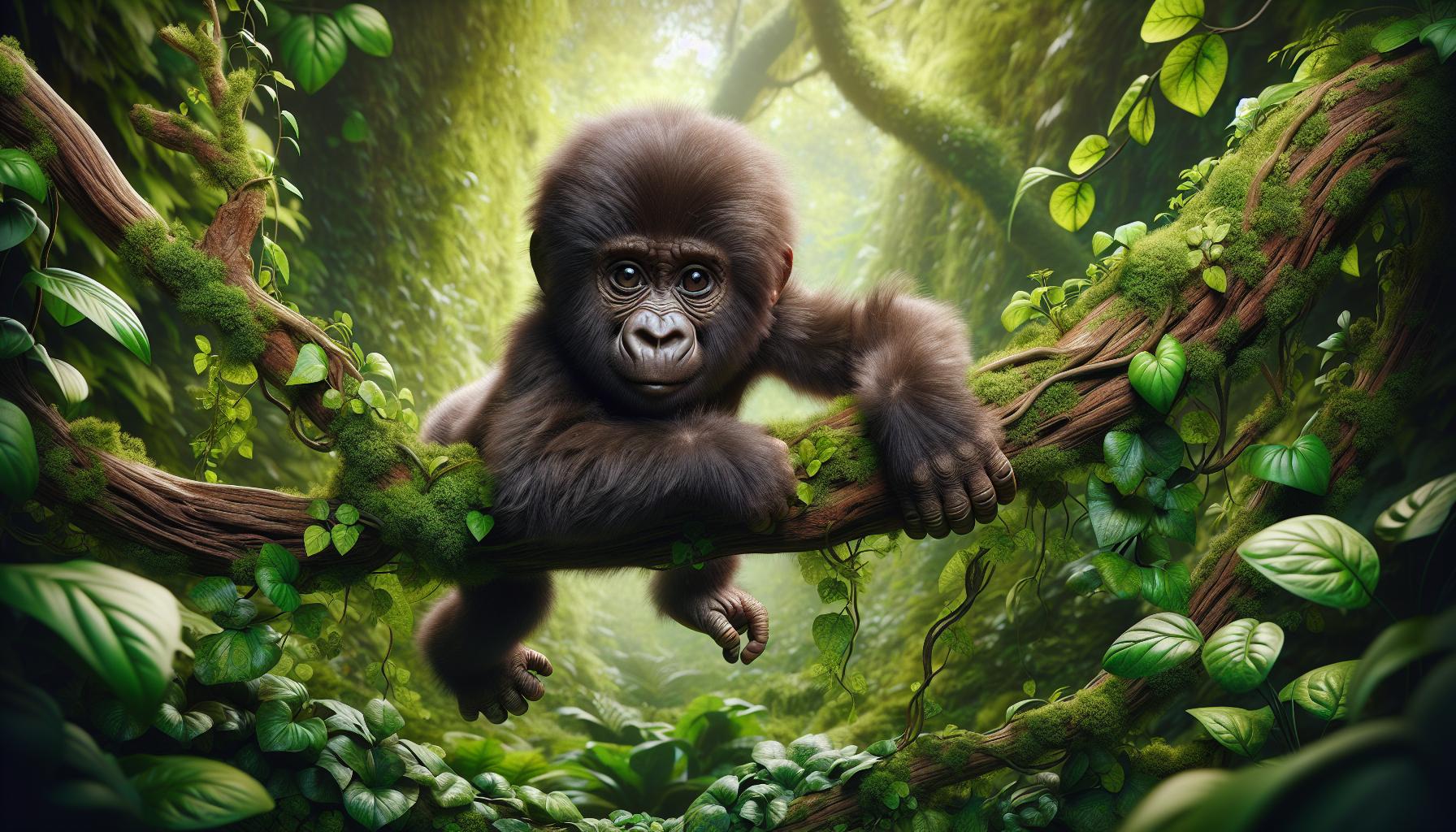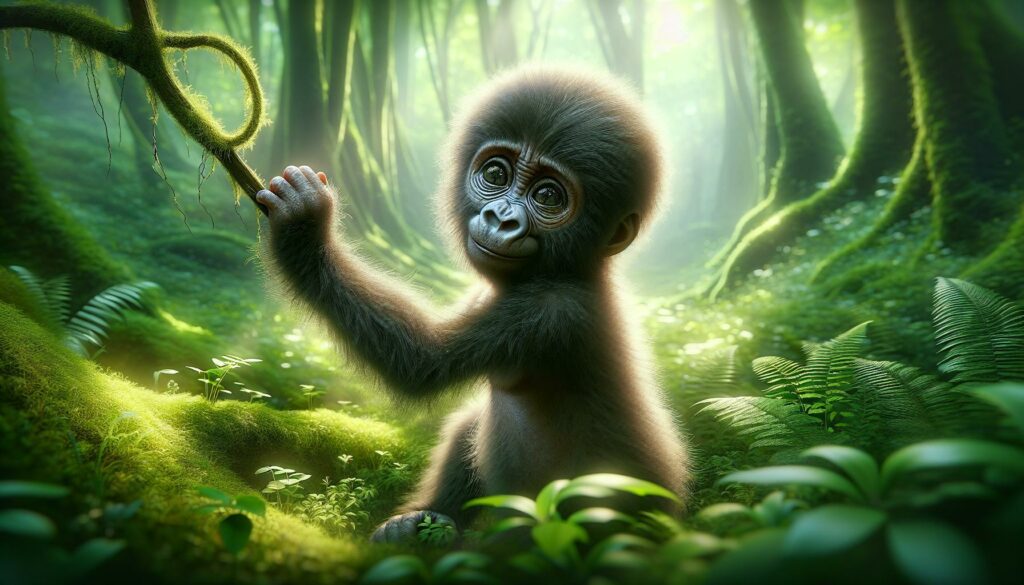When I first stumbled upon the captivating story of the baby gorilla known as baby:c8obf65ketq= gorilla, I couldn’t help but feel a wave of curiosity wash over me. This little one isn’t just another animal in the zoo; it represents a remarkable blend of resilience and the ongoing efforts in wildlife conservation. As I delved deeper into its journey, I discovered the challenges and triumphs that come with raising such a magnificent creature.
The bond between a mother gorilla and her offspring is nothing short of extraordinary. Watching their interactions offers a glimpse into the complex emotional lives of these animals. In this article, I’ll explore the significance of baby:c8obf65ketq= gorilla story and what it means for gorilla conservation efforts worldwide. Join me as we uncover the heartwarming and inspiring aspects of this baby gorilla’s life.
- Significance of Conservation: The story of baby:c8obf65ketq= gorilla highlights the importance of gorilla conservation efforts amid threats like habitat loss and poaching.
- Emotional Bonds: The deep connection between mother gorillas and their offspring is crucial for the baby’s development and survival skills.
- Physical and Behavioral Traits: baby:c8obf65ketq= gorilla showcases unique physical characteristics and behaviors that illustrate its adaptability and dependency on its mother.
- Natural Habitat: Gorillas inhabit tropical forests and mountainous regions, which are essential for their food sources and social interactions.
- Dietary and Social Needs: Proper nutrition and social engagements are fundamental for baby:c8obf65ketq= gorilla growth, ensuring a well-rounded development essential for thriving in the wild.
- Conservation Actions: Ongoing conservation measures, such as habitat protection and public awareness campaigns, are vital for the survival of gorillas like baby:c8obf65ketq= gorilla.
Baby:c8obf65ketq= Gorilla
Baby baby:c8obf65ketq= gorilla represents a pivotal figure in the ongoing dialogue surrounding gorilla conservation. This young gorilla’s experiences exemplify the challenges faced by gorillas in the wild. The threats posed by habitat loss, poaching, and disease significantly affect their populations.
baby:c8obf65ketq= gorilla showcases the deep emotional connections between mother gorillas and their offspring. These bonds are crucial for the baby gorilla’s development, ensuring survival and passing on vital skills. Observations reveal that the nurturing provided by mother gorillas enhances the social and survival instincts of their young.
The story of baby:c8obf65ketq= gorilla also highlights the broader implications for global conservation efforts. Increased public awareness surrounding this baby gorilla’s journey can inspire action. Engaging narratives about individual animals often motivate people to support conservation programs and initiatives focused on gorilla habitats and protection.
baby:c8obf65ketq= gorilla life not only illustrates the resilience of gorillas but also serves as a reminder of the urgent need for cohesive conservation strategies. The ongoing commitment to protecting these magnificent creatures plays a vital role in ensuring their future in the wild.
Characteristics of Baby:c8obf65ketq= Gorilla

Baby:c8obf65ketq= gorilla exhibits remarkable characteristics that reflect its development and adaptability. These traits encompass both physical and behavioral aspects, essential for its survival and growth in the wild.
Physical Traits
Baby:c8obf65ketq= gorilla physical appearance showcases distinctive features typical of gorillas. The baby gorilla has a small, stocky body, covered with soft, dark fur, providing insulation and protection. Its head is proportionally large, with prominent brow ridges, a flat nose, and expressive eyes that convey emotions. The limbs are short but strong, which enables early climbing and grasping. The baby gorilla’s hands and feet contain opposable thumbs and toes, enhancing its ability to manipulate objects and navigate its environment. Overall, these physical attributes facilitate its ability to bond with the mother and explore its surroundings.
Behavioral Traits
Behaviorally, baby:c8obf65ketq= gorilla exhibits curiosity, playfulness, and dependence on its mother. This baby gorilla actively engages in play with siblings and other young gorillas, fostering social bonds essential for its development. The interactions help build confidence and social abilities, preparing the baby for life in a troop. Communication plays a significant role, as the baby uses vocalizations, facial expressions, and body language to convey needs and emotions. Learning behaviors from the mother, such as foraging and climbing, supports skill acquisition crucial for survival. These traits underline the importance of nurturing in its early life, shaping the future of the young gorilla.
Habitat and Rarity

Gorillas, including baby:c8obf65ketq= gorilla, inhabit specific regions that are crucial for their survival. Understanding their natural habitat and conservation status helps frame the ongoing efforts to protect these endangered species.
Natural Habitat
Gorillas primarily reside in dense tropical forests and mountainous regions across central and western Africa. Their preferred environments include:
- Tropical Rainforests: These areas, rich in biodiversity, provide ample food sources like fruits, leaves, and stems. They require humid, warm conditions that support various plant species.
- Mountainous Zones: Some gorilla populations, such as the mountain gorillas, thrive at higher elevations, where cooler temperatures and vegetation differ from lower elevations.
- Savannas and Woodlands: Gorillas often forage in adjacent savanna regions, where food sources are abundant, especially during dry seasons.
These habitats not only offer food and shelter but also play a vital role in social interactions among gorillas. The combination of dense vegetation and accessibility to resources influences their daily behavior and community dynamics.
Conservation Status
Gorillas face significant threats, impacting their conservation status:
- Endangered Classification: The International Union for Conservation of Nature (IUCN) lists two species of gorillas as critically endangered: the Western Gorilla and the Eastern Gorilla. This classification reflects their dwindling populations and the variety of threats encountered.
- Threats to Survival: Habitat destruction, driven by logging, agriculture, and infrastructure development, drastically reduces their natural environment. Poaching for bushmeat and the illegal wildlife trade further exacerbates gorilla population declines.
- Disease Vulnerability: Gorillas are susceptible to diseases, including Ebola and respiratory infections, which can decimate populations, especially in human-proximate areas.
Conservation measures, including habitat protection, anti-poaching initiatives, and disease monitoring programs, remain vital for the survival of gorillas. Raising awareness of these efforts can support broader conservation actions.
Care and Raising of Baby:c8obf65ketq= Gorilla

Caring for baby:c8obf65ketq= gorilla requires attention to dietary needs and social interactions. These aspects are essential to their growth and development.
Dietary Needs
Dietary needs for baby:c8obf65ketq= gorilla focus on a balanced intake of fruits, leaves, and flowers. Infants consume mother’s milk, providing vital nutrients for growth during the initial months. As the baby gorilla matures, it gradually incorporates solid foods into its diet, such as ripe fruits like bananas and berries, tender leaves, and nutrient-rich vegetation. The transition to solid food occurs around six months and continues until approximately two years of age, supporting physical development. Proper nutrition enhances bone strength and overall health, crucial for playing and climbing in the wild.
Social Interactions
Social interactions play a crucial role in baby:c8obf65ketq= gorilla emotional and social development. The baby gorilla forms strong bonds with its mother, engaging in affectionate behaviors such as grooming and hugging. Interaction with siblings enhances social skills, offering opportunities to learn group dynamics and communication methods, including vocalizations and body language. Playtime is vital for developing agility and coordination, enabling baby:c8obf65ketq= gorilla to navigate its environment effectively. Observing and mimicking adult gorillas further aids in mastering social norms within the group, essential for future survival in the wild.
The Journey of Baby Gorilla
The journey of baby gorilla baby:c8obf65ketq= gorilla embodies hope and resilience in the fight for wildlife conservation. This little one not only represents the unique emotional bonds between mother and child but also serves as a powerful reminder of the challenges gorillas face in the wild.
As I reflect on baby:c8obf65ketq= gorilla story, I’m inspired by the potential for increased awareness and action in gorilla conservation efforts. Each of us can play a role in protecting these magnificent creatures and their habitats. By supporting conservation initiatives and spreading the word, we can help ensure a brighter future for gorillas like baby:c8obf65ketq= gorilla.

